Berlin's Must-See Landmarks Unveiled
Join a free walking tour through Berlin's iconic sites, perfect for those who love long walks and must-see places in this vibrant city.
Time
3 Hours
Stops
9 Places
Distance
5.3 km
Brandenburg Gate (Brandenburger Tor)
Start your journey at the iconic Brandenburg Gate, a symbol of Berlin's history and unity, standing majestically as a must-see landmark.

Brandenburg Gate (Brandenburger Tor) (Source: Google Maps)
The Brandenburg Gate, an 18th-century neoclassical monument, is one of Berlin's most iconic landmarks. Designed by architect Carl Gotthard Langhans, it was commissioned by King Frederick William II of Prussia. The gate features 12 Doric columns and stands 26 meters tall, symbolizing peace and unity. During the Cold War, it became a symbol of division, standing in the no-man's-land between East and West Berlin. Following the fall of the Berlin Wall in 1989, it has come to represent the reunification of Germany and is a popular site for celebrations and events.
Reichstag Building (Reichstagsgebäude)
A short walk from the Brandenburg Gate, the Reichstag Building is home to the German parliament and features a stunning glass dome you can visit for panoramic city views.
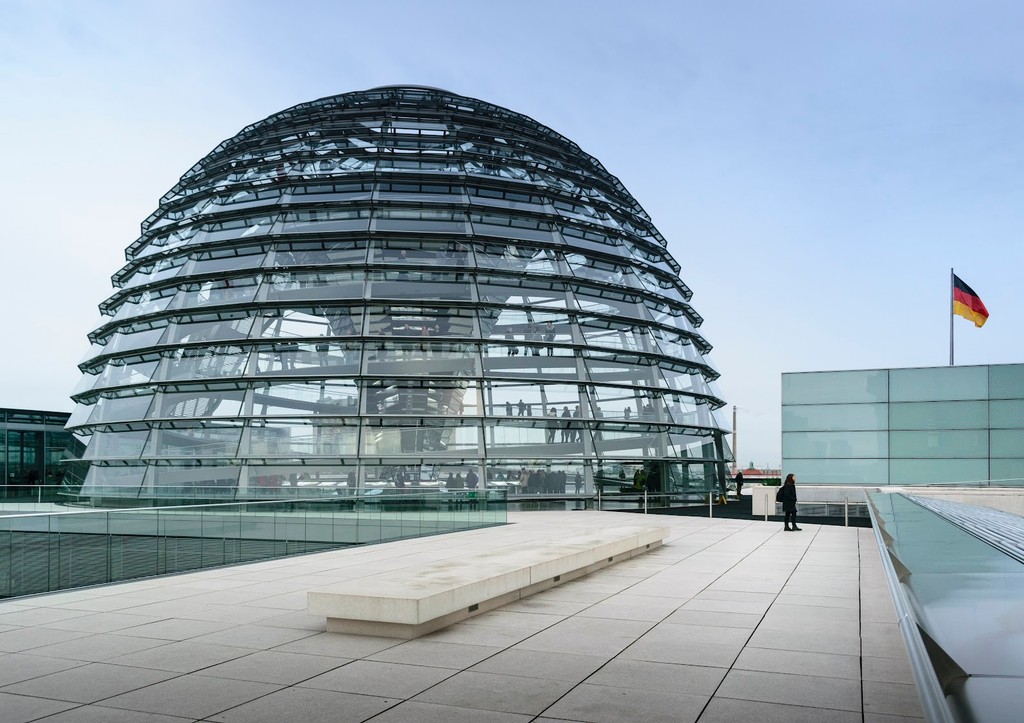
Reichstag Building (Reichstagsgebäude) (Source: Google Maps)
The Reichstag Building, completed in 1894, houses the German parliament and is a masterpiece of neo-Renaissance architecture. Its most notable feature is the glass dome, designed by architect Norman Foster, which allows visitors to ascend and enjoy panoramic views of Berlin. The dome symbolizes transparency in government and is a testament to the rebuilding of the German democratic system after World War II. The building has a tumultuous history, including a fire in 1933 that led to its temporary abandonment. Today, it stands as a symbol of democracy and political engagement.
Memorial to the Murdered Jews of Europe (Holocaust Memorial)
Continue your walk to this poignant memorial, consisting of 2,711 concrete slabs, commemorating the Jewish victims of the Holocaust.
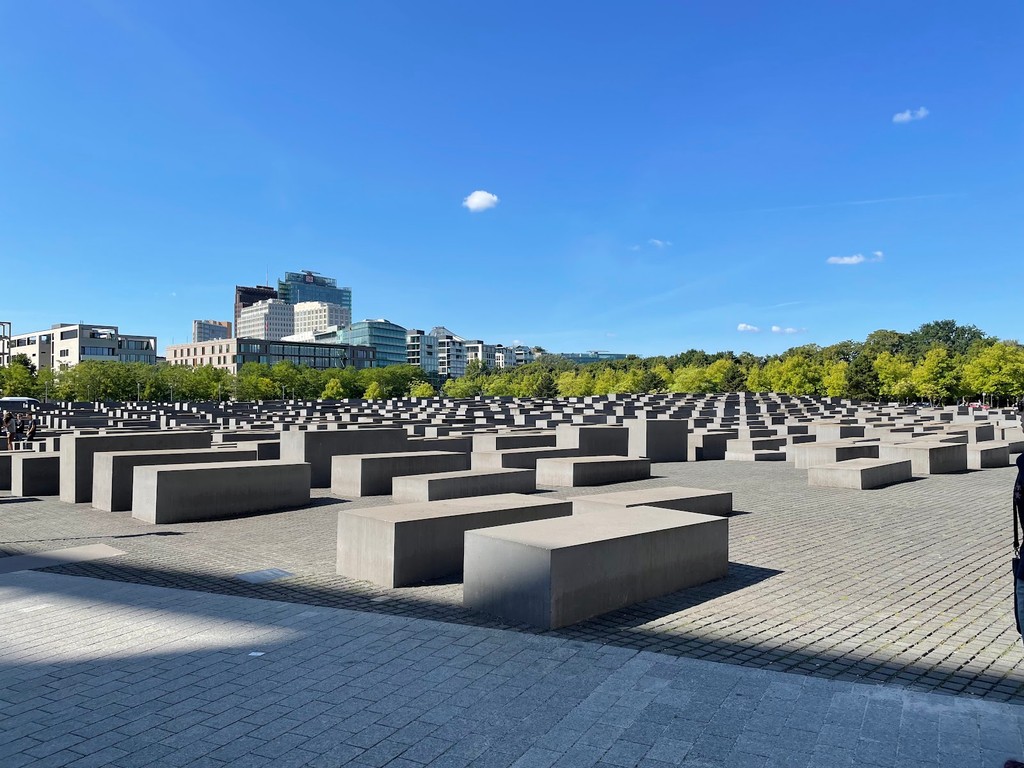
Memorial to the Murdered Jews of Europe (Holocaust Memorial) (Source: Google Maps)
The Memorial to the Murdered Jews of Europe, designed by architect Peter Eisenman and engineer Buro Happold, was inaugurated in 2005. It consists of 2,711 concrete slabs of varying heights, creating a wave-like effect as visitors walk through. The design is intentionally abstract, allowing for personal interpretation and reflection. Beneath the memorial lies an information center that provides historical context and personal stories of Holocaust victims. This poignant site serves as a reminder of the atrocities committed during World War II, encouraging remembrance and dialogue about intolerance and human rights.
Potsdamer Platz
Head to Potsdamer Platz, a vibrant area that showcases Berlin's modern architecture and dynamic urban life, with its mix of shopping and entertainment.
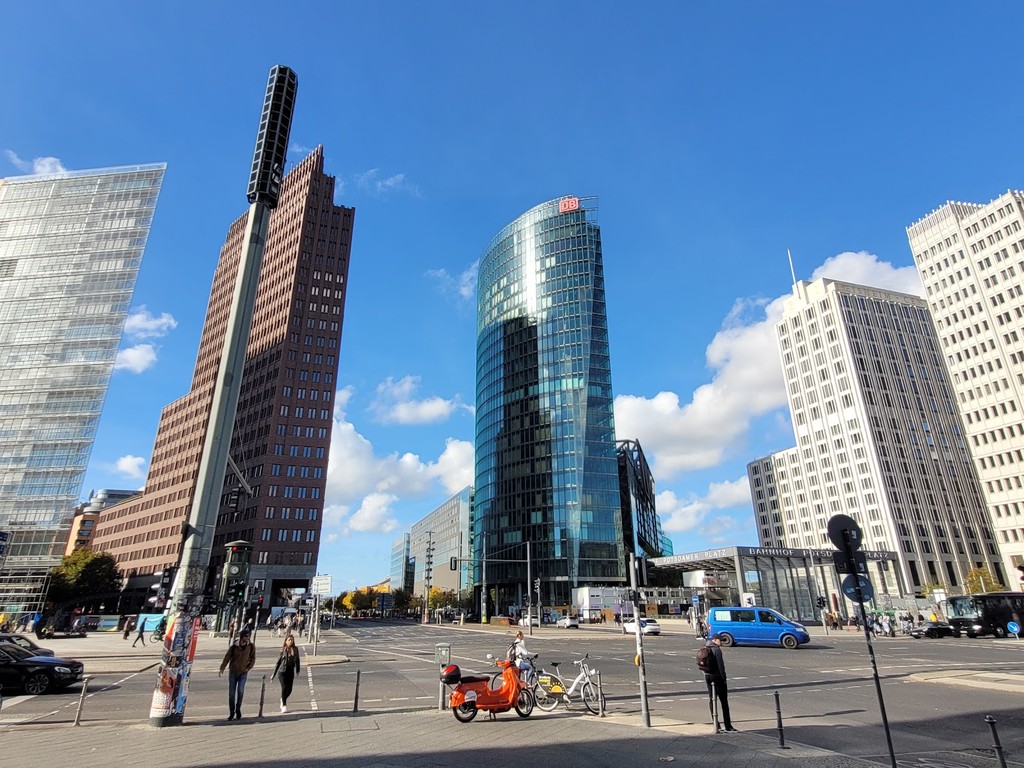
Potsdamer Platz (Source: Google Maps)
Potsdamer Platz is a bustling square that epitomizes Berlin's modern architectural landscape. Once a desolate area divided by the Berlin Wall, it has been transformed into a vibrant hub featuring skyscrapers, shops, and entertainment venues. The architectural style ranges from postmodern to contemporary, showcasing designs by renowned architects such as Renzo Piano and Helmut Jahn. The square hosts various events throughout the year, including the Berlin International Film Festival. Its revitalization reflects Berlin's dynamic spirit and serves as a symbol of the city's rebirth after reunification.
Topography of Terror
This historical site on the former grounds of the SS and Gestapo headquarters offers a deep dive into Berlin's darker past through its exhibits.

Topography of Terror (Source: Google Maps)
The Topography of Terror is a documentation center located on the site of the former SS and Gestapo headquarters. It provides a comprehensive overview of the institutions of terror during the Nazi regime. The center features an outdoor and indoor exhibition that delves into the history of the Nazi era, including the rise of the regime and the atrocities committed. Visitors can explore photographs, documents, and testimonies that illustrate the impact of totalitarianism. The site serves as a powerful reminder of the dangers of hatred and intolerance, promoting education and reflection.
Checkpoint Charlie
Walk to the famous Checkpoint Charlie, the best-known Berlin Wall crossing point between East and West Berlin during the Cold War.
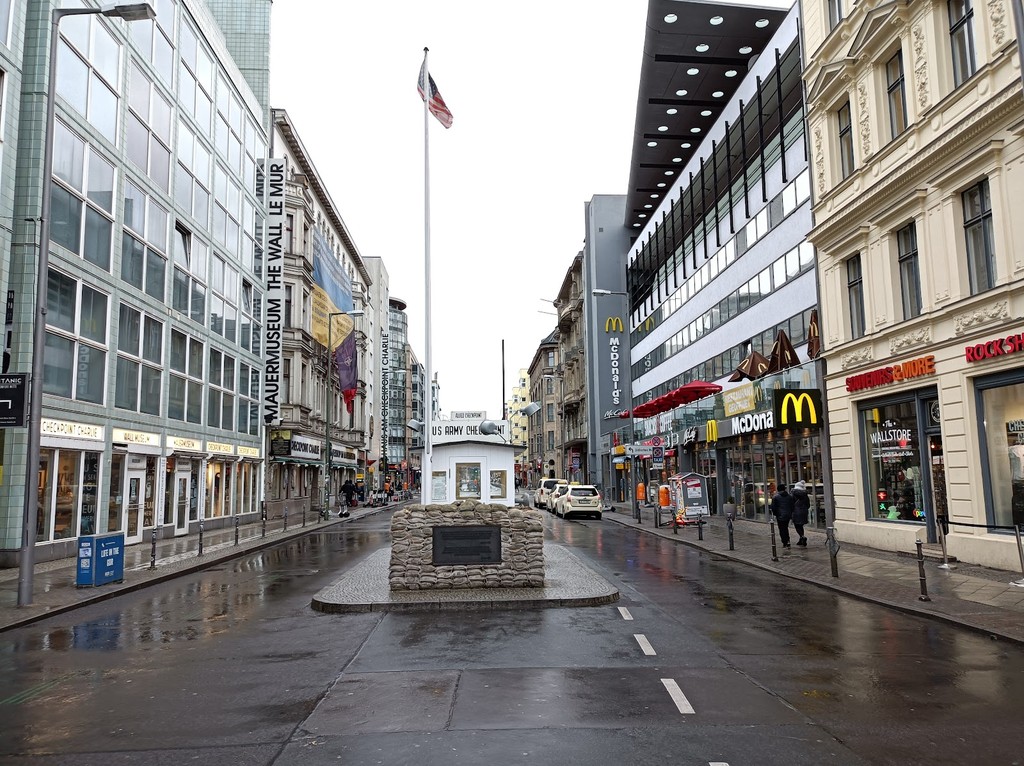
Checkpoint Charlie (Source: Google Maps)
Checkpoint Charlie was the most famous border crossing point between East and West Berlin during the Cold War. Established in 1961, it became a symbol of the division between the two ideologies. The checkpoint was heavily guarded and marked the boundary where diplomats and foreigners could cross between the two sectors. Today, it is a popular tourist attraction, featuring a replica booth and informative displays about its historical significance. The site serves as a reminder of the tensions of the Cold War era and the eventual reunification of Germany.
Gendarmenmarkt
Stroll to Gendarmenmarkt, one of Berlin's most beautiful squares, flanked by the German and French Cathedrals and the Concert Hall.
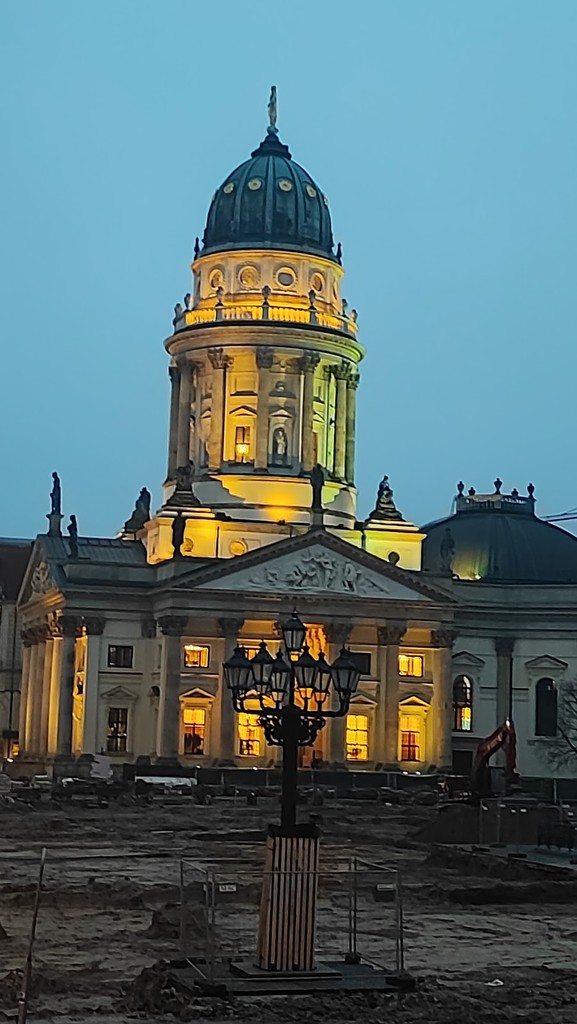
Gendarmenmarkt (Source: Google Maps)
Gendarmenmarkt, often regarded as Berlin's most beautiful square, is surrounded by stunning architecture, including the German Cathedral, the French Cathedral, and the Konzerthaus (Concert Hall). The square was built in the late 17th century and has served various purposes throughout its history. The German Cathedral houses a museum that explores the history of Protestantism, while the French Cathedral features a viewing platform with panoramic views of the city. The square is a hub for cultural events, including open-air concerts and Christmas markets, making it a vibrant part of Berlin's cultural scene.
Museum Island (Museumsinsel)
Make your way to Museum Island, a UNESCO World Heritage site, home to five world-renowned museums offering a rich cultural experience.
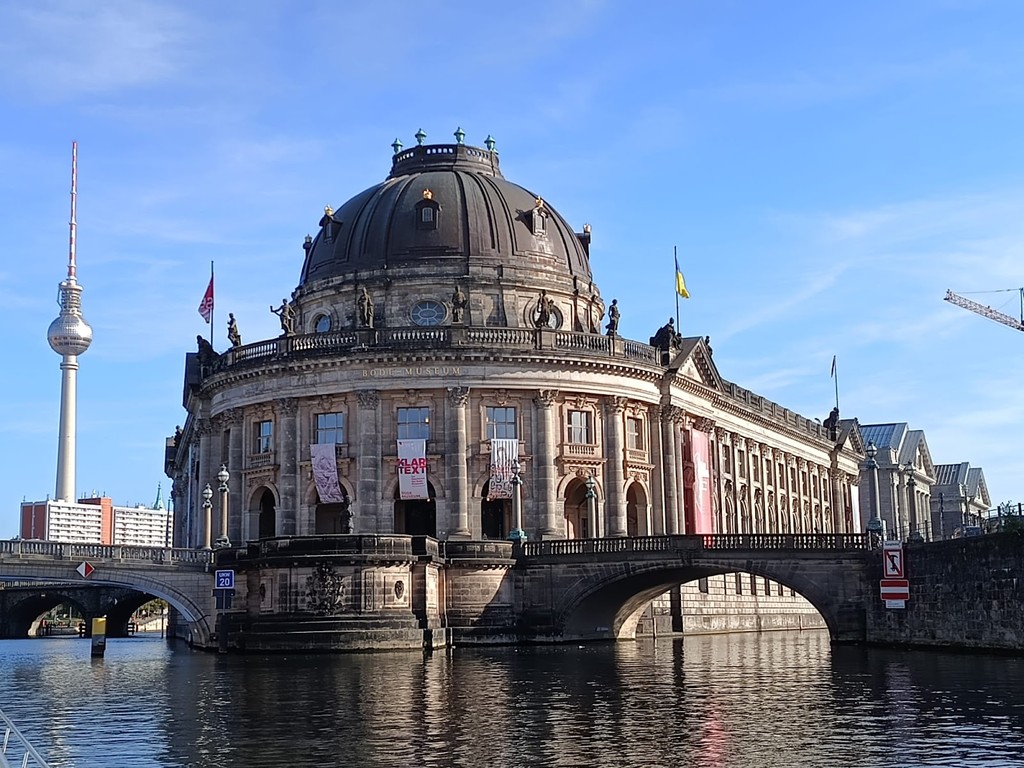
Museum Island (Museumsinsel) (Source: Google Maps)
Museum Island is a UNESCO World Heritage site located in the heart of Berlin, home to five world-renowned museums: the Altes Museum, the Neues Museum, the Alte Nationalgalerie, the Bode Museum, and the Pergamon Museum. Each museum showcases a unique collection, from ancient artifacts to 19th-century art. The island has a rich history, with the museums built between the 19th and early 20th centuries, reflecting the artistic and cultural aspirations of the time. Museum Island is a cultural treasure trove, attracting millions of visitors annually who come to explore its vast artistic heritage.
Berliner Dom (Berlin Cathedral)
End your tour at the majestic Berlin Cathedral, a stunning architectural masterpiece with a fascinating history and breathtaking interior.
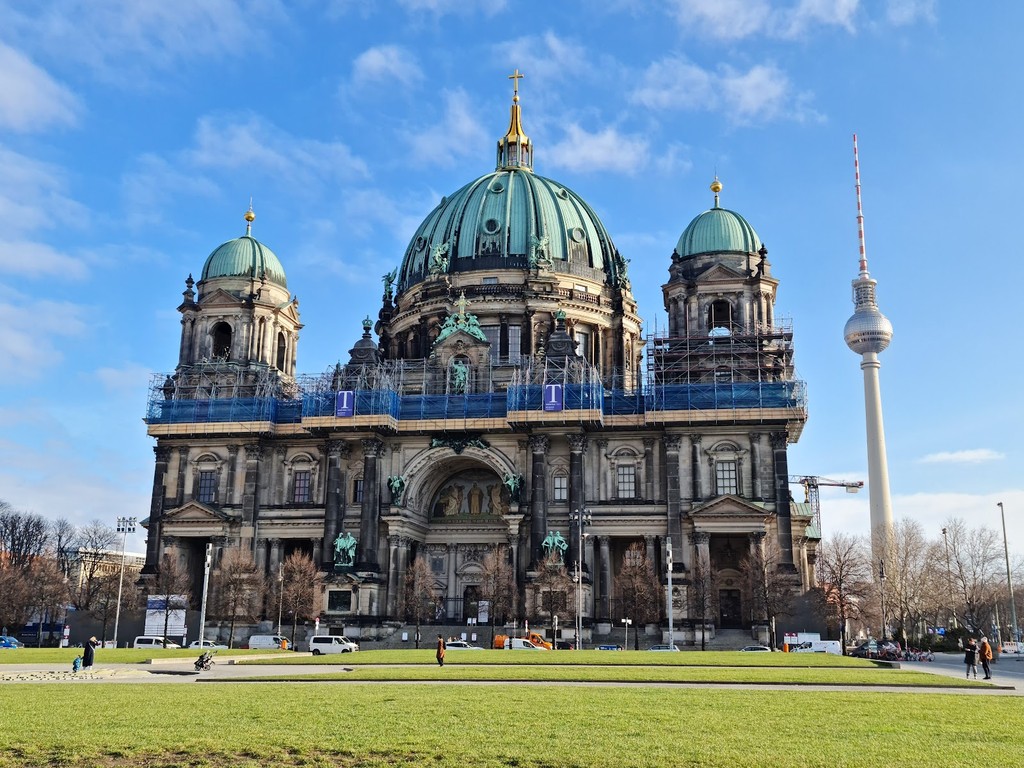
Berliner Dom (Berlin Cathedral) (Source: Google Maps)
The Berliner Dom, or Berlin Cathedral, is an iconic Protestant cathedral completed in 1905. Its impressive dome, standing 98 meters tall, is a prominent feature of the Berlin skyline. The cathedral is designed in the Baroque Revival style, with intricate mosaics and stunning stained-glass windows. Inside, visitors can explore the grand nave, the Hohenzollern crypt, and the beautiful organ. The cathedral has served as a place of worship, a concert venue, and a symbol of Berlin's resilience, especially after its restoration following World War II. The Berliner Dom continues to be a significant cultural and religious site in the city.

Your travels, your rules.
Create your own Free Walking Tours.
Set your preferences, distances and anything you want to do or see.
Completely free, no payment required.